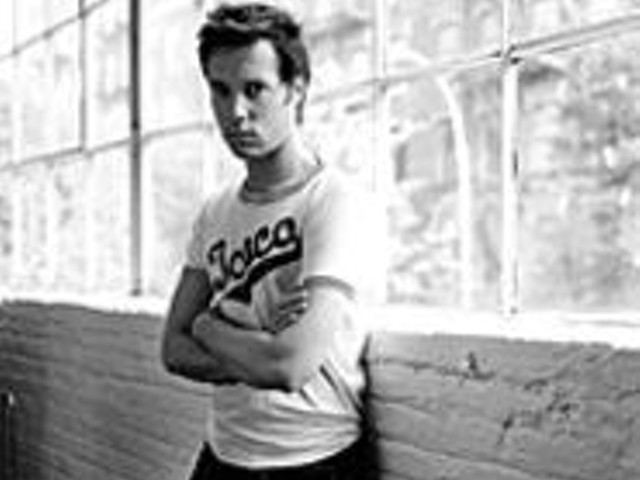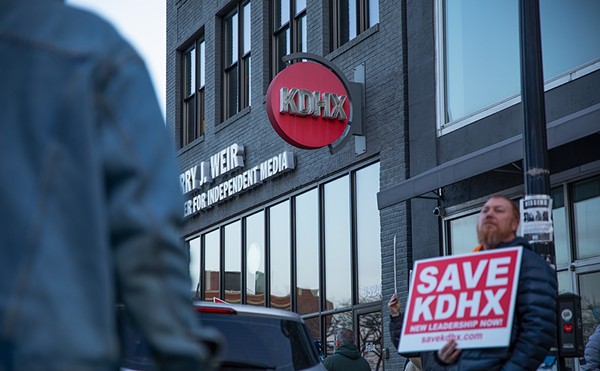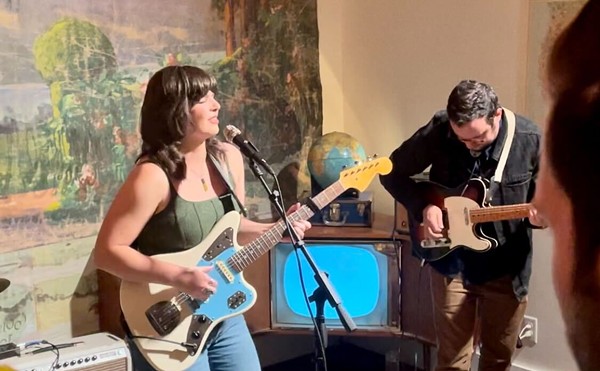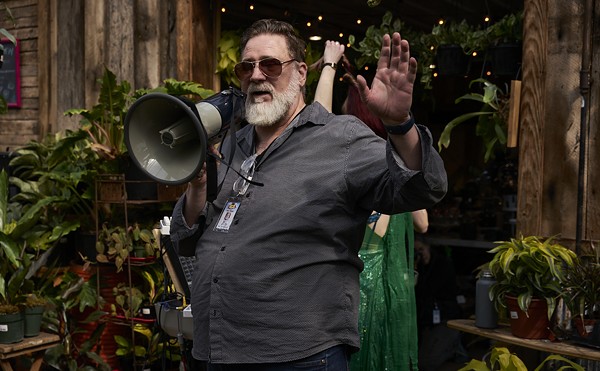In the late '70s, the B3 was abandoned by many jazz artists in favor of the new synthesizer technology, and this once-revered Hammond organ became a relic of early keyboard technology, a significant but outdated instrument. Enter Joey DeFrancesco, a Philadelphia-bred organist who, for more than a decade, has resuscitated the art of organ jazz and brought the B3 back into the limelight.
"I brought it back, for sure. I feel single-handedly responsible. There was nothing going on, nobody cared," says DeFrancesco. "It needed a new face, a new sound."
There may be a bit of bravado in his statement, but listening to the good-natured DeFrancesco talk about his music, one gets the sense that lugging his 400-pound Hammond around is his mission in life. "Whether I played good or bad, it brought it back. It was just the sound that was great to hear."
When Chicago clockmaker Laurens Hammond created his first electric organ in 1933, he envisioned a compact, economical instrument that would emulate the pipe organ. An inventor known for creating 3D glasses and an auto-shuffling bridge table, Hammond had no inkling that his namesake instrument would be a staple of jazz, blues and R&B acts for years to come. While he was still with the company until 1960, Hammond refused to endorse artists such as Jimmy Smith or Jack McDuff, jazz musicians who lived and died with their beloved B3s and who turned the Hammond name into musical gold. While Hammond ultimately failed at re-creating the pipe organ, this failure created the most revered sound in the electric keyboard family.
But why, exactly, is the B3 so revered? It's impossible to quantify why humans are attracted to various sights or sounds, and the sweet warmth of the Hammond is no different. However, DeFrancesco offers one important factor: "I think it's because the instrument is such a soulful instrument."
Much of this soul comes from the Leslie speaker, a heavy, wooden cabinet that houses a rotating horn and drum, created in an attempt to contain the acoustics of a grand hall or a cathedral. You know the organ solo in "Good Loving" by the Rascals? That is a Hammond with a Leslie speaker being pushed to its limits. Hammond players can control the speed of the horn rotations as well, so watching a skilled organ grinder like DeFrancesco is akin to watching a NASA scientist behind the control desk, albeit with a bit more energy and, well, soul.
Aside from a healthy serving of soul, DeFrancesco is lucky to have both nature and nurture on his side when it comes to his musical abilities. He was deemed a piano prodigy at a young age, making waves in the Philly jazz scene as a young teen. And while natural talent can't be ignored, his father, "Papa" John DeFrancesco, helped steer his son in the right direction. "Papa" John played his B3 along the East Coast in the early '60s, and his son took naturally to the Hammond.
A chance meeting with Miles Davis on a Philadelphia public-access show led to the seventeen-year-old DeFrancesco's emergence into the jazz continuum. DeFrancesco toured with Davis and played on two of his albums in the late '80s. From there, he left the world of jazz fusion and focused on a more classic, reverential style of music. DeFrancesco channeled the spirits and sounds of the giants of organ jazz and revived the once-dead style.
Throughout his fifteen-year career, DeFrancesco has worked with some of jazz's finest, from Davis to Kenny Garrett, but no collaboration was more momentous than his sharing the stage with Jimmy Smith, the undisputed originator and king of organ jazz. For DeFrancesco, it was another step in his mission to help legitimize Smith and the art of the jazz organ. The concert, captured on the Incredible! album, not only allowed DeFrancesco to play alongside an idol but also gave the young organist a chance to shine a light on an innovator.
"[Hammond players] are respected, but you don't talk about Jimmy Smith in the same breath that you talk about John Coltrane, and I think that you should," says DeFrancesco.
In the spirit of collaboration, DeFrancesco paired off with a lesser-known East Coast singer, Joe Doggs, for 2003's Falling in Love Again. It is strongly rumored that Doggs is the alter-ego of consummate goodfella Joe Pesci, but DeFrancesco could not confirm or deny this. The album finds DeFrancesco taking a back seat to Doggs' high tenor, allowing the singer to explore such standards as "Love for Sale" and "Pennies from Heaven." Even if these two paesanos are pulling a Garth Brooks/Chris Gaines move on us, the result doesn't disappoint.
In addition to supporting Joe Pesci's burgeoning music career, DeFrancesco pays tribute to that other great Italian singer, Frank Sinatra, with his new CD, Plays Sinatra His Way. He will be hitting the road with his trio, working through standards and wowing crowds with his showmanship.
When he comes through St. Louis this week, DeFrancesco will be touting the recently released Hammond New B3, a modern update on the old standard. Hammond stopped producing its flagship model in 1975, so this constitutes a musical event in its own right. The New B3 is digitized and up to snuff with modern technology, but it's the most faithful emulation of the oft-imitated sound.
"The new B3 is pretty much like the old B3 in look and feel and everything else," says DeFrancesco. He may sound like a celebrity endorser, but in the organ jazz arena, there is no greater voice of authority.





